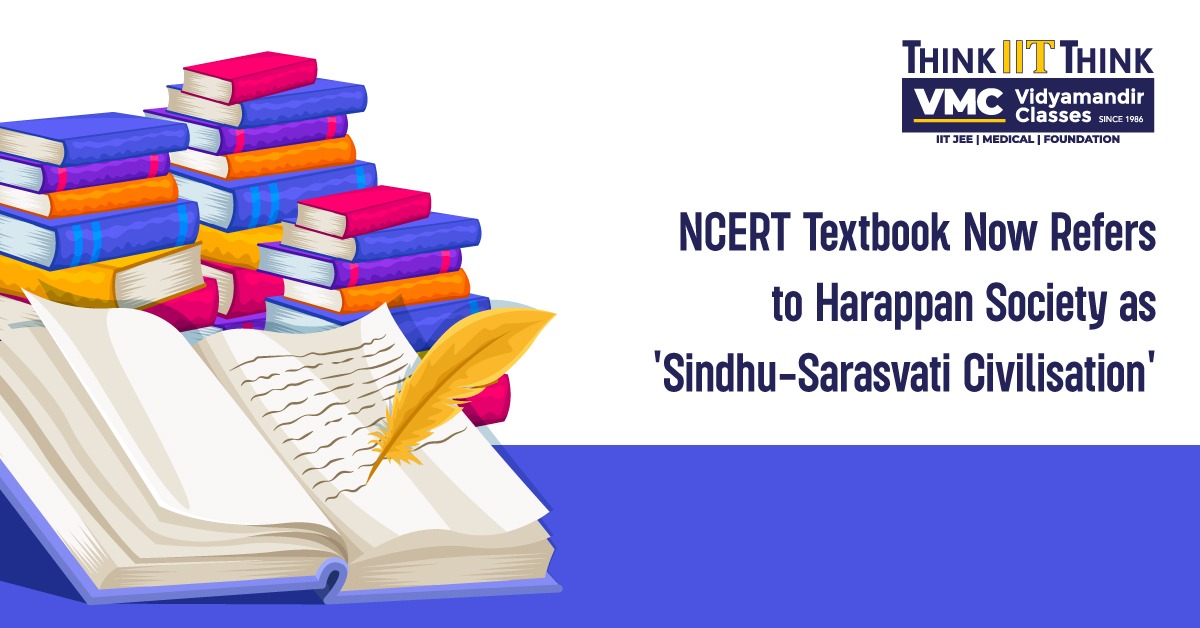NCERT Textbook Now Refers to Harappan Society as ‘Sindhu-Sarasvati Civilisation’
 Posted On
Posted On
228 total views, 2 views today
The National Council of Educational Research and Training (NCERT) has introduced a new Class 6 Social Science textbook titled ‘Exploring Society: India and Beyond,’ which identifies the Harappan Society as the ‘Sindhu-Sarasvati Civilisation.’ This change reflects a broader and more inclusive understanding of the ancient society.
In Unit 6, titled ‘The Beginnings of Indian Civilisation,’ the textbook explains, “Archaeologists have referred to this civilisation by various names – ‘Indus,’ ‘Harappan,’ ‘Indus-Sarasvati,’ or ‘Sindhu-Sarasvati’ civilisation. We will use all these terms interchangeably. Its inhabitants are commonly known as ‘Harappans,’ and it is recognized as one of the oldest civilisations in the world.”
Emphasis on the Sarasvati River
A significant addition in this unit is the mention of the Sarasvati River. The textbook emphasizes how frequently the river is mentioned in the “Rig Veda,” even though it is now called as the “Hakra” in Pakistan and the “Ghaggar” in India. Its inclusion draws attention to the river’s historical and cultural significance in ancient Indian civilization.
Curriculum Revision Aligned with NEP 2020
This textbook revision is part of a broader curriculum overhaul undertaken by NCERT, an autonomous institution under the Ministry of Education. These changes are aligned with the National Education Policy (NEP) 2020, which aims to modernize and enhance the quality of education in India.
Historical Context of the Sindhu-Sarasvati Civilisation
The renaming of the Harappan Society to the Sindhu-Sarasvati Civilisation in the new textbook is a significant step in acknowledging the extensive geographical and cultural expanse of this ancient society. The civilisation flourished around the Sindhu (Indus) and Sarasvati rivers, regions that are now part of modern-day India and Pakistan.
Archaeological Discoveries and Significance
Archaeological research has uncovered numerous sites belonging to this civilisation, revealing advanced urban planning, intricate drainage systems, and a highly organized social structure. The cities of Harappa and Mohenjo-Daro, among others, showcase the architectural ingenuity and sophistication of the Harappans. By including these aspects in the curriculum, the textbook aims to provide students with a comprehensive understanding of the civilisation’s historical importance.
Sarasvati River: Myth and Reality
The inclusion of the Sarasvati River in the textbook ties in with both historical texts and contemporary archaeological findings. The ‘Rig Veda,’ one of the oldest known scriptures, frequently mentions the Sarasvati River, praising it as a mighty and life-sustaining river. Modern archaeological efforts have traced the remnants of what is believed to be the ancient course of the Sarasvati, now identified as the Ghaggar-Hakra river system.
Bridging Ancient History and Modern Education
The updated curriculum aims to close the knowledge gap between education in the ancient world and the present. By incorporating the latest archaeological findings and scholarly research, the NCERT aims to foster a deeper understanding and appreciation of India’s rich cultural heritage among students. The textbook encourages critical thinking and exploration, enabling students to draw connections between historical events and contemporary society.
Conclusion: Embracing a Holistic View of History
The NCERT’s decision to refer to the Harappan Society as the Sindhu-Sarasvati Civilisation marks a progressive shift in educational perspectives. This change not only broadens the historical narrative but also aligns with the goals of the National Education Policy 2020 to provide a holistic and inclusive education. As students delve into the pages of ‘Exploring Society: India and Beyond,’ they embark on a journey through time, uncovering the mysteries and marvels of one of the world’s oldest civilizations. Through this updated curriculum, the NCERT aims to inspire a new generation of learners, fostering a sense of pride and curiosity about India’s ancient past.




